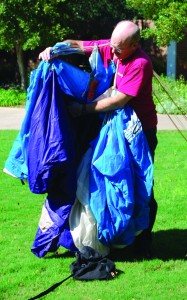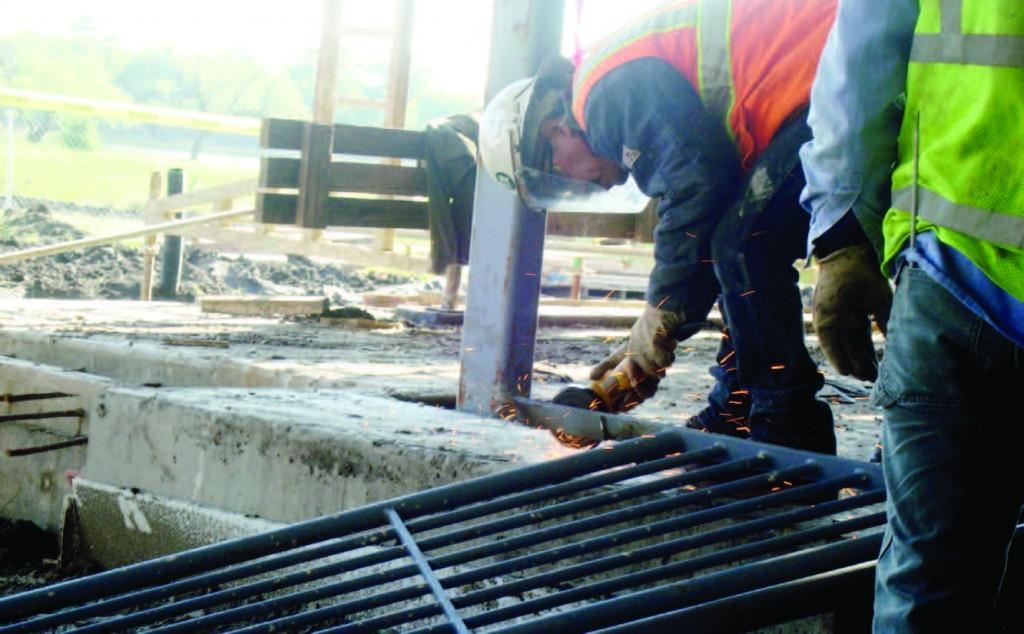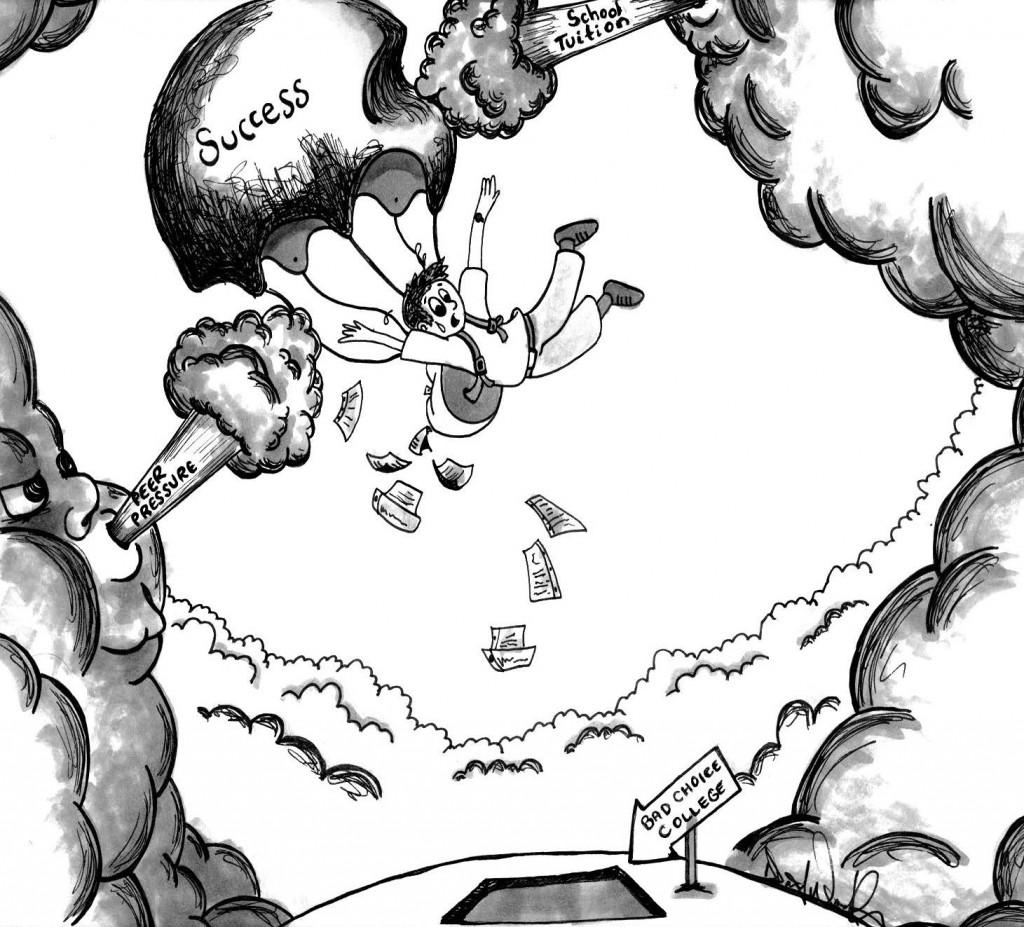By Montreal Spencer/south news editor

Is it a bird? Is it in a plane? No, it’s just Jim McGraw and the gang skydiving out of a plane.
McGraw, a nurse for 27 years, member of the Navy Reserve Nurse Corps and South Campus assistant professor of nursing for 11 years, competed in the U.S. Parachute Association’s intermediate 4-way formation skydiving event Oct. 12–14.
In 4-way formation, four people in a team grip each other’s limbs or specially built grippers on their jumpsuits while a fifth team member films them as they fall.
In the event, McGraw and his team, Dallas Vertical Velocity, jumped from 10,500 feet or two miles, falling 115 mph and attempting to complete as many free-fall formations as possible in 10 35-second rounds.
“My first 30 jumps, I was nervous, but you get to the point where you are comfortable with your equipment and skills,” McGraw said. “And when you’re that comfortable, you can focus on other things besides your fears and anxieties.”
McGraw said he was always interested in skydiving but officially started when his son graduated from high school about two years ago.
“I always wanted to do it, and he was off to college, so now I’ve been having a great time. I like the heck out of it,” he said. “Every free weekend when the weather is good, I like to go to the drop zone.”
McGraw became a skydiving coach this past May.
“I teach them how to fly in free fall with other people,” he said.
One can become a coach after 100 jumps, but McGraw waited until he reached 300.
Vertical Velocity has made about 80 jumps and competed once this past summer in four meets for the Texas Skydiving League.
The members met at Skydive Dallas in Whitewright, Texas, where they all were jumping.
“We were all at the same place, and we all were interested in joining a team. Johnathon [McMakin] went around recruiting people,” McGraw said.
All five members have different positions as in any sport.
David Huckie is the inside center; McMakin, point; Dave Prusock, tail; Bryce Willing, cameraman, and McGraw, outside center.
The inside center usually exits the plane first while everyone holds onto the other team members’ grippers, the parts of their suits on the legs and arms where they can grip.
To practice, they use a creeper, like the one’s mechanics use to slide under a car, to engineer the moves from formation to formation.
In competition, they receive lists of moves they must do in a particular order.
“We have to memorize what the moves are. Then what we’ll do is walk it,” he said.
Vertical Velocity practices exiting the plane on the ground using a mock-up, and they also pack, or stuff, their own parachute bags. McGraw said in competition he pays people to pack his parachute for him so he can rehearse and rest.
Risks of injuries can come with skydiving as it does with many other sports. Last year, 30 people died from skydiving, but skydivers made more than 2 million jumps.
“We are really focused on not hurting each other,” McGraw said. “One of the leading causes for skydiving deaths is collision in freefall or under the canopy. We are aware of the potential to hurt each other, so we work very hard to prevent that.”
After doing as many moves as they can, they separate at 4,000 feet and get away from each other as quickly as possible to prevent injury. However, McGraw said he’s not too worried about injuries.
“I’m far more nervous about my performance than getting hurt,” he said. “I don’t want to let down my teammates, and I need to do my job.”
























